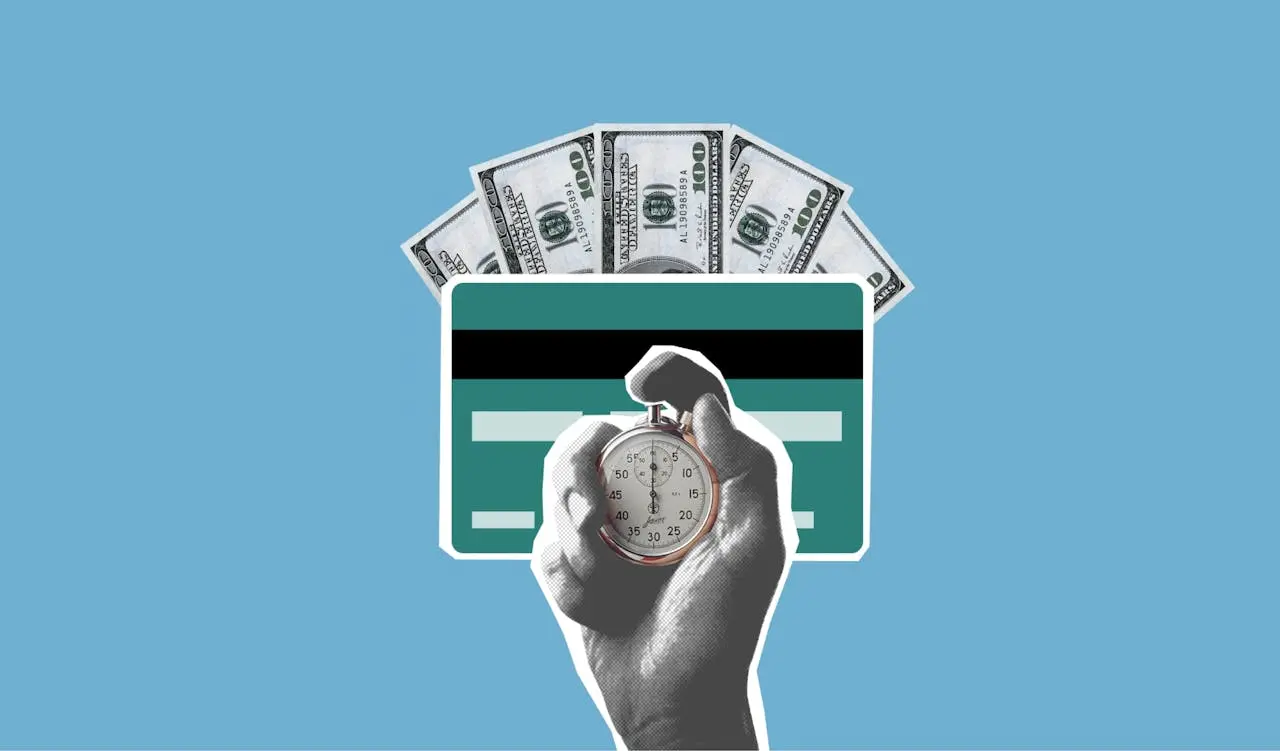
You’re staring at your bank account wondering where all your money went again, aren’t you? Trust me, I’ve been there – watching my paycheck disappear faster than pizza at a college party. The secret isn’t earning more money, it’s knowing exactly where every dollar should go before you spend it. These ten budget categories will transform your financial chaos into organized control, and I’ll show you the specific percentages that actually work in real life.
Key Takeaways
- Housing costs should represent 25-35% of monthly income, including mortgage, rent, taxes, insurance, and maintenance expenses.
- Transportation expenses are typically the second largest budget category, averaging $356-$535 monthly and shouldn’t exceed 15% of income.
- Food and groceries should consume 12-15% of monthly income, with dining out limited to 5-15% of total food budget.
- Emergency fund should start at $1,000 and grow to cover 3-6 months of expenses in a separate savings account.
- Debt management requires listing all obligations, prioritizing high-interest debt, and setting up automatic payments to avoid fees.
Housing and Shelter Costs
Reality check: housing will probably eat up the biggest chunk of your monthly budget, and I’m not just talking about a gentle nibble. You’re looking at 25-35% of your income going straight to keeping a roof over your head. That means if you’re making $3,500 monthly, expect $875 to $1,225 vanishing into housing costs.
Your rent or mortgage payment is just the beginning. Property taxes, homeowners or renters insurance, and home maintenance will tag along for the ride. Don’t forget HOA fees if you’re lucky enough to have neighbors policing your mailbox color.
The brutal truth? Your mortgage payment in Manhattan won’t match rural Montana prices. Smart move: consider roommates or downsizing to reclaim control over your budget. If housing costs are consuming too much of your income, starting a low-cost business from home can provide additional revenue streams to help balance your budget.
Transportation Expenses
After housing eats up your biggest chunk of money, transportation usually swoops in to claim the second-largest bite of your budget, typically running you anywhere from $356 to $535 monthly. Whether you’re making car payments on that reliable Honda or dealing with the endless cycle of gas fill-ups and oil changes, these vehicle expenses add up faster than you’d expect.
If transportation costs are stretching your budget too thin, consider starting a freelance writing business that you can operate from home to reduce commuting expenses while generating additional income.
Let’s break down the two main culprits that’ll either keep your transportation budget on track or send it careening off the road: vehicle payment costs and the ongoing fuel and maintenance expenses.
Vehicle Payment Costs
When you’re car shopping, that shiny new vehicle might look amazing, but the monthly payment can absolutely wreck your budget if you’re not careful. New car payments average around $550 monthly, while used vehicles typically cost about $400. That’s serious money that could crush your financial goals if you’re not strategic.
Your transportation costs should never exceed 15% of your monthly budget, including your car payment, auto insurance, gas, and maintenance. Before you fall in love with that dream ride, calculate what you can actually afford. Consider putting more money down to lower monthly payments, or explore different loan terms to find what works.
Sometimes choosing a reliable used car over a flashy new one means the difference between financial stress and having money left for the fun stuff.
Fuel and Maintenance
Gas prices creep up on you like that friend who always “forgets” their wallet at dinner, and before you know it, you’re spending $175 a month just to keep your car running. Your transportation budget needs two separate line items: fuel and maintenance expenses.
The average person drops $2,109 yearly on fuel alone, plus another $1,156 on vehicle repairs and maintenance. That’s nearly $300 monthly you need to budget for.
Set aside money for regular oil changes and tire rotations – they’ll save you from costly engine disasters later.
Create an emergency fund specifically for unexpected repairs, because your transmission won’t ask permission before breaking down. Smart budgeting means planning for both predictable maintenance cost and those surprise expenses that’ll otherwise derail your monthly budget.
Food and Groceries

Food and groceries will likely become your second-largest budget category after housing, typically eating up 12-15% of your monthly income, or around $372 per month for the average American. You’ll need smart grocery shopping strategies to keep costs under control, because let’s be honest, those Target runs for “just milk” somehow turn into $80 receipts filled with snacks you didn’t plan to buy.
Setting clear limits on dining out becomes essential too, since swapping restaurant meals for home cooking can save you hundreds each month without making you feel like you’re living on ramen noodles. The key is practicing conscious spending by distinguishing your food needs from wants and creating a realistic spending plan that aligns with your financial goals.
Grocery Shopping Strategies
Since grocery bills can easily spiral out of control if you’re not careful, mastering a few simple shopping strategies can save you hundreds of dollars each year. You’ll want to create meal plans before grocery trips to avoid those impulse purchases that kill your food budget.
Smart shoppers maximize coupons, store loyalty programs, and sales on items they actually use. Don’t fall for deals on stuff you’ll never eat—trust me, I’ve learned this lesson the hard way.
| Strategy | Savings Impact |
|---|---|
| Generic/store brands | 20-40% less than name brands |
| Bulk non-perishables | 15-25% per unit savings |
| Perimeter shopping | Focus on whole nutritious foods |
Stick to the grocery store perimeter where fresh, whole nutritious foods live, and you’ll naturally avoid processed junk.
Dining Out Limits
While smart grocery shopping forms the foundation of your food budget, restaurant meals represent the wild card that can make or break your monthly spending plan. The average American household drops $3,459 yearly on dining out – that’s nearly $300 monthly! You’ll want to allocate 5-15% of your total food budget to these variable expenses, which typically means budgeting $100-300 per month.
Limit dining out to 2-3 times weekly, including those sneaky work lunches that drain your wallet faster than you’d think. Track every restaurant expense religiously – you’ll be shocked where your money actually goes. Consider dining out a “want” versus grocery “needs” when prioritizing your monthly bills. This approach gives you control over spend your money decisions while still enjoying life’s tasty pleasures.
Utilities and Basic Services
After you’ve tackled housing costs, utilities and basic services become your next major budget battleground, typically eating up 5-10% of your monthly income. You’re dealing with electricity, gas, water, sewer, trash, and internet – the essentials that keep your life running smoothly.
These expenses can fluctuate wildly based on your location and usage habits, so research local rates before you’re blindsided by a $300 electric bill in July.
Here’s how to dominate this category:
- Bundle internet and cable services to slash individual costs
- Sign up for budget plans that spread seasonal spikes throughout the year
- Monitor your usage religiously to catch expensive habits early
- Implement energy-efficient practices that actually move the needle
Smart monitoring and strategic planning transform utilities from budget destroyers into manageable, predictable expenses you can control. Consider adding a small humidifier to your workspace for comfort while keeping energy costs reasonable during dry seasons.
Insurance Coverage
Insurance might feel like you’re paying for problems you don’t have yet, but trust me, you’ll want these safety nets when life throws its inevitable curveballs. Your health insurance premiums are non-negotiable since a single emergency room visit can cost $3,000 or more, and your auto insurance isn’t optional either—most states require it by law.
Don’t forget about property insurance too, whether you’re renting or own your home, because replacing all your stuff after a fire or theft will make your wallet weep harder than you did watching that sad movie last week. Consider budgeting for replacement costs of valuable items like electronics, since a quality action camera alone can cost $65 and your tech collection adds up quickly.
Health Insurance Premiums
Health insurance premiums can feel like that friend who always shows up to dinner uninvited, except this friend legally has to be there and costs you anywhere from $200 to $800 per month. When creating your budget, this miscellaneous budget category can include more than just your monthly premium payment.
Your Personal Budget needs to include these health insurance premiums realities:
- Individual marketplace plans average $438 monthly, while family employer plans hit $1,223
- Federal subsidies can slash your costs if you qualify through the ACA marketplace
- Your employer might cover part of your premiums, reducing your personal finance burden
- Don’t forget deductibles, copays, and coinsurance in your Monthly Expenses to Include calculation
This budget category demands 5-25% of your income, so plan accordingly.
Property and Auto
Your car and home represent two of your biggest investments, which means they’re also two of your biggest financial risks if something goes wrong. That’s where insurance swoops in to save your financial bacon.
If you’re renting, you’ll need renter’s insurance at around $300-$1,000 yearly. Homeowner’s insurance falls in the same range but covers way more stuff. Auto insurance is non-negotiable in most states, costing $1,000-$3,000 annually depending on your coverage choices.
Here’s the breakdown: liability coverage handles damage you cause others, while collision and all-encompassing protect your own ride. Consider umbrella insurance for extra liability protection starting at $1 million coverage.
Pro tip: bundle your policies together for 5-25% discounts that’ll make your wallet happier.
Healthcare and Medical Expenses

After food and housing, medical bills probably make you break out in a cold sweat faster than anything else on your budget. Healthcare expenses typically eat up 5-10% of your monthly income, and the average family drops around $5,000 yearly on medical costs.
Your healthcare budget needs to cover insurance premiums, out-of-pocket costs for doctor visits, prescriptions, and those surprise urgent care trips that always happen at the worst times.
- Preventive care – Annual checkups catch problems before they drain your wallet
- Emergency fund – Because broken bones don’t check your bank balance first
- Insurance comparison – Shop around to find better coverage for less money
- Health savings accounts – Tax-free money for medical expenses? Yes, please!
When unexpected medical bills hit, it’s important to examine your personal values around health spending and prioritize what matters most to maintain both your physical and financial well-being.
Debt Payments and Credit Obligations
While healthcare costs can shock your system, debt payments are the monthly vampires that slowly drain your bank account, 24/7. Your credit cards, personal loans, and student loans don’t care if you’re broke – they want their minimum monthly payments regardless.
I learned this lesson when juggling $15,000 across three credit card balances. Those credit card statements kept arriving like clockwork, demanding attention.
Here’s your power move: list every debt obligation in your budget, including minimum payments and due dates. Set up automatic payments to avoid late fees that’ll crush your progress.
Focus on high-interest credit cards first while maintaining minimums elsewhere. When I consolidated two cards, I budgeted for the balance transfer fee upfront. Debt payments aren’t optional – they’re mandatory budget categories that determine your financial freedom.
Successfully managing debt requires understanding your behavior patterns around spending and payments, not just knowing the numbers on your statements.
Savings and Emergency Fund
Once you’ve tackled those debt vampires, it’s time to build your financial safety net – and trust me, you’ll sleep better knowing it exists. Your emergency fund isn’t just saving money for personal care items or random wants. It’s your power move against life’s curveballs.
Start with $1,000 – even if it means eating ramen for weeks. Automate transfers so you can’t sabotage your own progress. Keep it separate from checking to avoid temptation. Aim for 3-6 months of expenses eventually.
Your monthly budget should include 10-20% for financial goals. You need to make this non-negotiable. Make sure your emergency fund stays liquid in a boring savings account – accessibility beats fancy returns here.
Consider starting a home-based business to accelerate your emergency fund growth while maintaining flexibility in your schedule.
Personal Care and Discretionary Spending
Two categories that’ll either make or break your budget are personal care and discretionary spending – and honestly, this is where most of us go completely off the rails.
Your personal care and entertainment should each claim 5-10% of your monthly budget. That gym membership, streaming services, and beauty treatments? They add up faster than you think.
| Category | Monthly Limit | Examples |
|---|---|---|
| Personal Care | 5-10% of budget | Haircuts, gym membership, skincare |
| Entertainment | 5-10% of budget | Streaming services, movies, concerts |
| Hobbies | Within discretionary | Art supplies, sports equipment, books |
Here’s your power move: audit every subscription service ruthlessly. Cut back on what you don’t actively use. That Netflix subscription you forgot about? Gone. Keep discretionary spending tight, but don’t eliminate it completely – you need some fun to stay sane.
When planning your personal care budget, remember that morning routine essentials like quality skincare tools and wellness items are investments in your daily productivity and well-being.
Entertainment and Recreation
Entertainment spending is where your budget dreams go to die, and I learned this the hard way when I blew through $400 in one month on “just a few fun things.” You’re looking at concerts that cost $80 a ticket, dinner dates that hit $60 before dessert, and those “quick drinks” that somehow turn into $45 tabs.
Here’s how to master this discretionary category and save your money:
- Set a fixed entertainment budget of 5-10% of your monthly income
- Track every recreation expense to identify your spending triggers
- Choose free activities like hiking, parks, or home movie nights
- Cancel unused subscriptions that drain your budget silently
Smart budgeters know entertainment matters for happiness, but you can’t let it sabotage your financial goals each month. Consider exploring free local attractions like museums with community days, public gardens, or historical sites that provide enriching experiences without the hefty price tag.
Conclusion
You’ve got the roadmap now, so don’t let your budget become another abandoned New Year’s resolution sitting in your junk drawer. Start with just three categories this week – I’d suggest housing, food, and savings since they’ll make the biggest impact. Recall, you’re not aiming for perfection here, you’re building a habit that’ll actually stick. Your future self will appreciate you when you’re not eating ramen again.





Pingback: 24 College Student Frugal Living Tips: Graduate Debt-Free